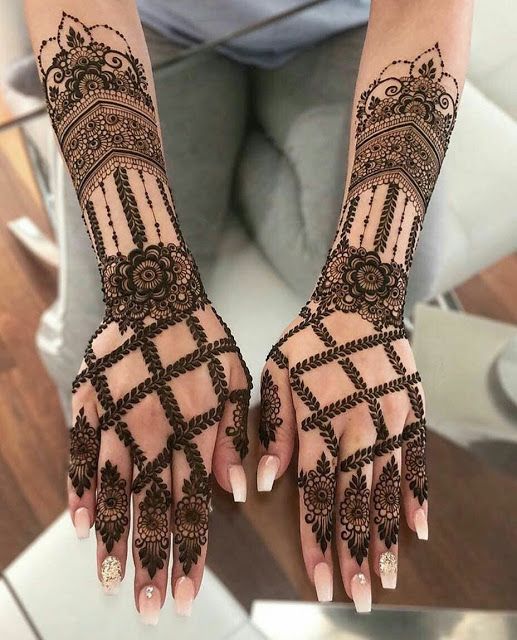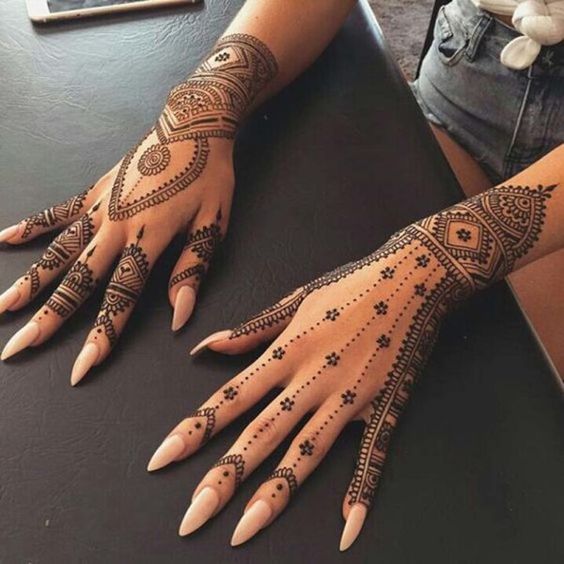- Henna mandala tattoos patterns:
Henna patterns vary from region to region and in each region, henna
has some significant meaning. They signify health, fertility, wisdom,
spirituality and enlightenment. You can make them with the help of henna
paste and you can vary the shade of your henna from light brown to dark
brown with the help of various ingredients. These ingredients are added
in different proportions to get different shades. These patterns are
drawn all over the palm.
- Henna Designs
- Designs for Palms:
Henna mandala patterns vary according to the region. Arabic patterns are floral and
big, while Indian patterns are fine and lacy with small floral patterns.
Traditional henna tattoos patterns are geometric patterns like circles,
triangles and lines. All these shapes are combined to form a very
trendy, as well as traditional design. Intricate designs can be drawn
with a little practice. Flower arches, lotus, leave chains and henna web
are some of the usual henna patterns for beginners. Usually, beginners
start by drawing straight and curved lines. The very first step of
drawing them is bordering the palm or drawing a circle at the center of
the palm. While drawing the patterns on the palms, always remember to
fill the patterns on the palm and then on the fingers. The most basic
pattern is drawing a circle at the center of the palm and covering the
upper crease of all the fingers on that hand with henna.
- Designs for Feet and Legs:
Henna
patterns on feet must be drawn only after a few days of practice, as
these designs are intricate. The geometric shapes are very common in
north America, however, in India, intricate and lacy designs are
preferred. Beginners must try with simple designs in the beginning and
try to draw henna patterns all over the feet for practice.
Creative designs can be formed with the help of permutations and combinations of different shapes. As you will practice different shapes, it will be easy for you to draw different patterns. You can experiment with any pattern and mix and match them to get different patterns.








No comments:
Post a Comment